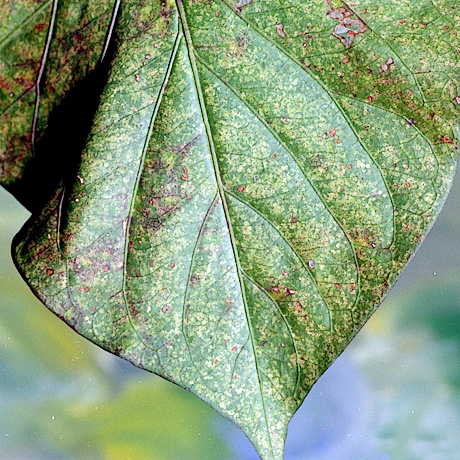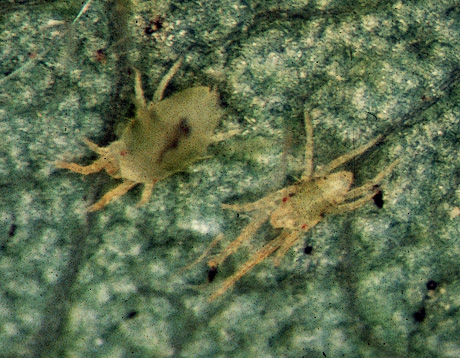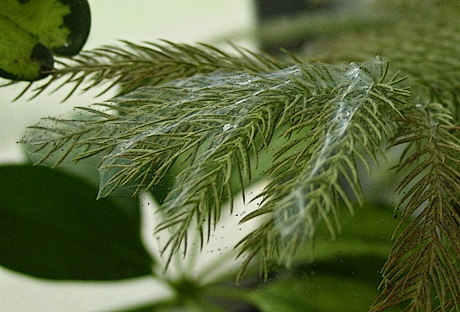
Spider Mites in Fort Collins
Damage caused by spider mites
Spider mites are arachnids like spiders, not insects. They feed on leaves by sucking out the leaf's fluids, causing flecking, discoloration, leaf loss, plant stress and sometimes death. They are very common plant pests and many different types of spider mites in Colorado, each with its own set of trees or plants that they feed upon; spruce spider mite attacks spruce and juniper; Oligonychus subnudus attacks pines; platytetranychus libocedri attacks arborvitae and juniper; and honeylocust spider mites attack honeylocusts.
 Clemson University - USDA Cooperative Extension Slide Series, Bugwood.org
Clemson University - USDA Cooperative Extension Slide Series, Bugwood.org
How to identify spider mites
Look for webbing and discolored leaves, and minute egg shells attached to underside of leaves near the main vein. If you suspect spider mites, shake a damaged leaf over a sheet of white paper and look for tiny colored spots that move about, these are the spider mites.
Adult spider mites are very small, barely visible to naked eye up to 1/20 inch long. They have a spider-like shape with 2 body parts, the abdomen and cephalothorax, and 8 legs. They come in red, brown, yellow and green, depending on the species and time of year.
Immature spider mites look just like adults but smaller and the newly hatched larvae have only 6 legs, and are colorless to yellow or pink.
The spider mite eggs are spherical and about 0.006" in diameter. They are translucent when laid, gradually changing to cream colored before they hatch.
 Whitney Cranshaw, Colorado State University, Bugwood.org
Whitney Cranshaw, Colorado State University, Bugwood.org
Life cycle of the spider mites
Spider mites overwinter as adults or eggs (depending on the species) in protected spots in tree bark or debris. They live and feed on the underside of the leaves. Most spider mites grow and reproduce quickly in the summer, reaching maturity in about a week after hatching, and then laying about 12 eggs every day for weeks. Other spider mites grow and reproduce most quickly in the spring and Fall when it is cooler, and survive heat of the summer as eggs. All spider mites like dry, dusty conditions, they can feed more and drought stressed plants are more nutritious and dust slows down their predators. Strong winds can carry them between trees.
 Joseph LaForest, University of Georgia, Bugwood.org
Joseph LaForest, University of Georgia, Bugwood.org
How to control the spider mites
The spider mite's natural predators are lady beetles, predatory mites, minute pirate bugs, big-eyed bugs, and predatory thrips. Improper application of insecticides can kill their natural predators while causing little damage to the spider mites and can cause spider mite population boom. Regular watering discourages spider mites, and spraying plants with water can dislodge spider mites, remove dust, and disturb their webbing. If you have a spider mite infestation that requires chemical treatment, use a miticide which has been specifically designed to kill spider mites.
 Charles Ray, Auburn University, Bugwood.org
Charles Ray, Auburn University, Bugwood.org
Other resources
 Charles Olsen, USDA APHIS PPQ, Bugwood.org
Charles Olsen, USDA APHIS PPQ, Bugwood.org





